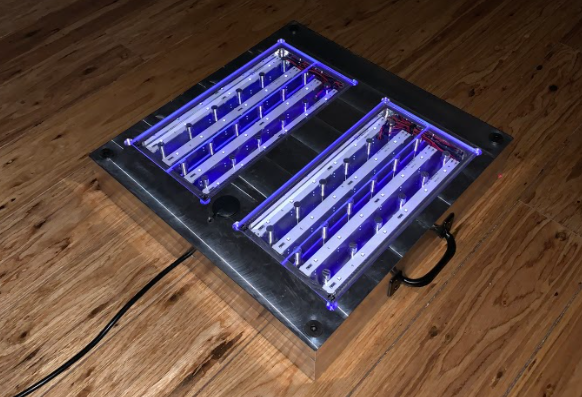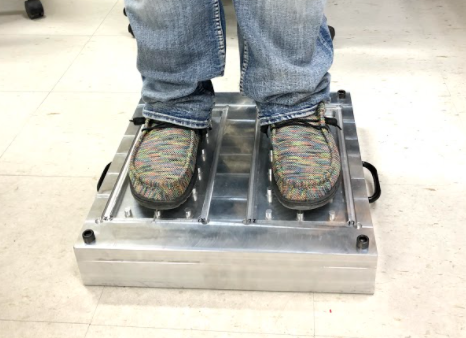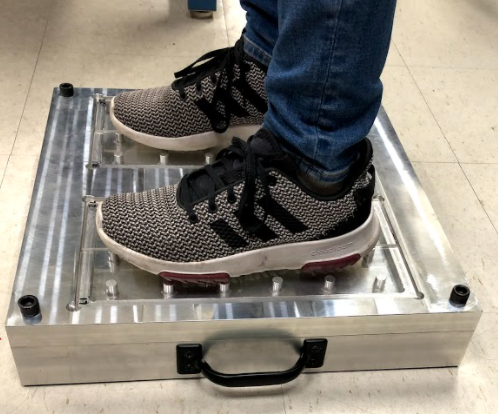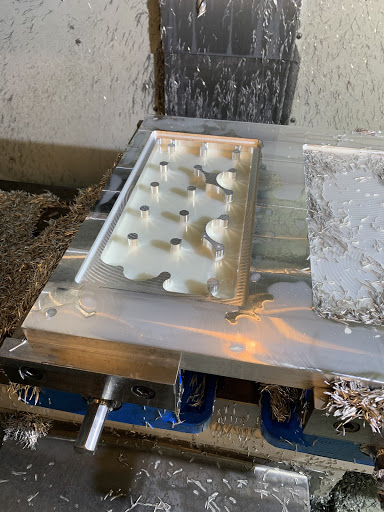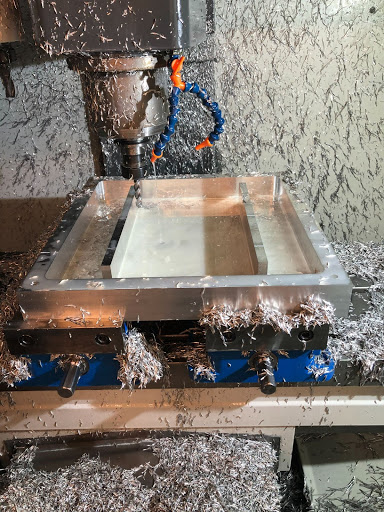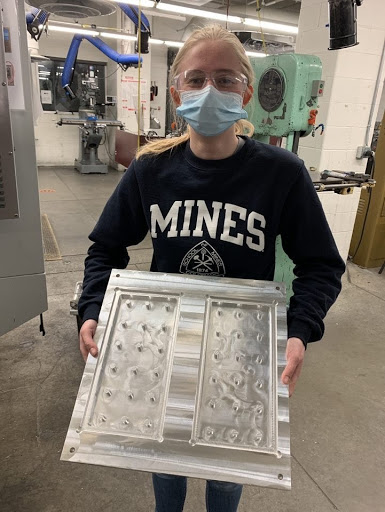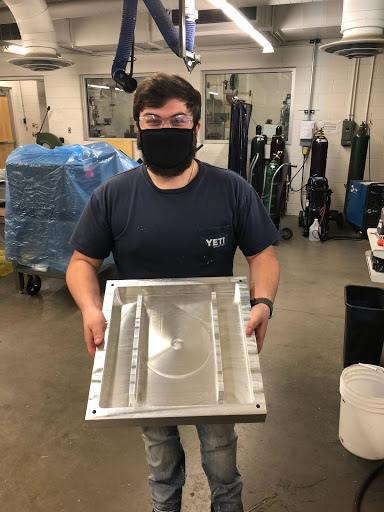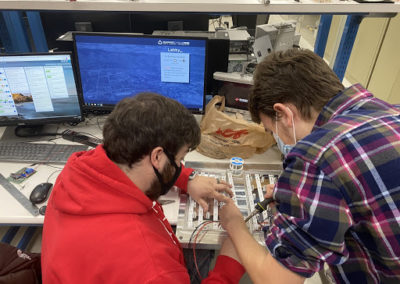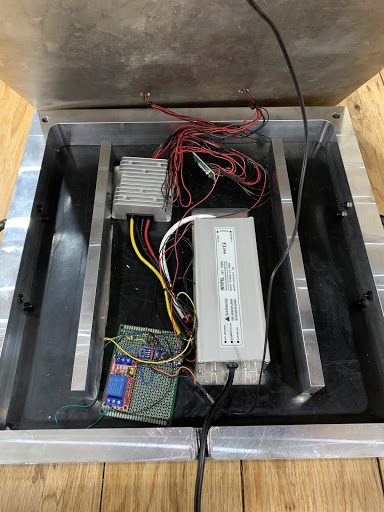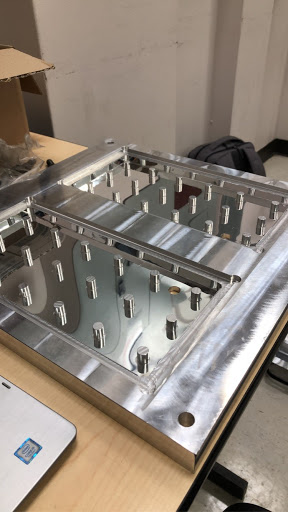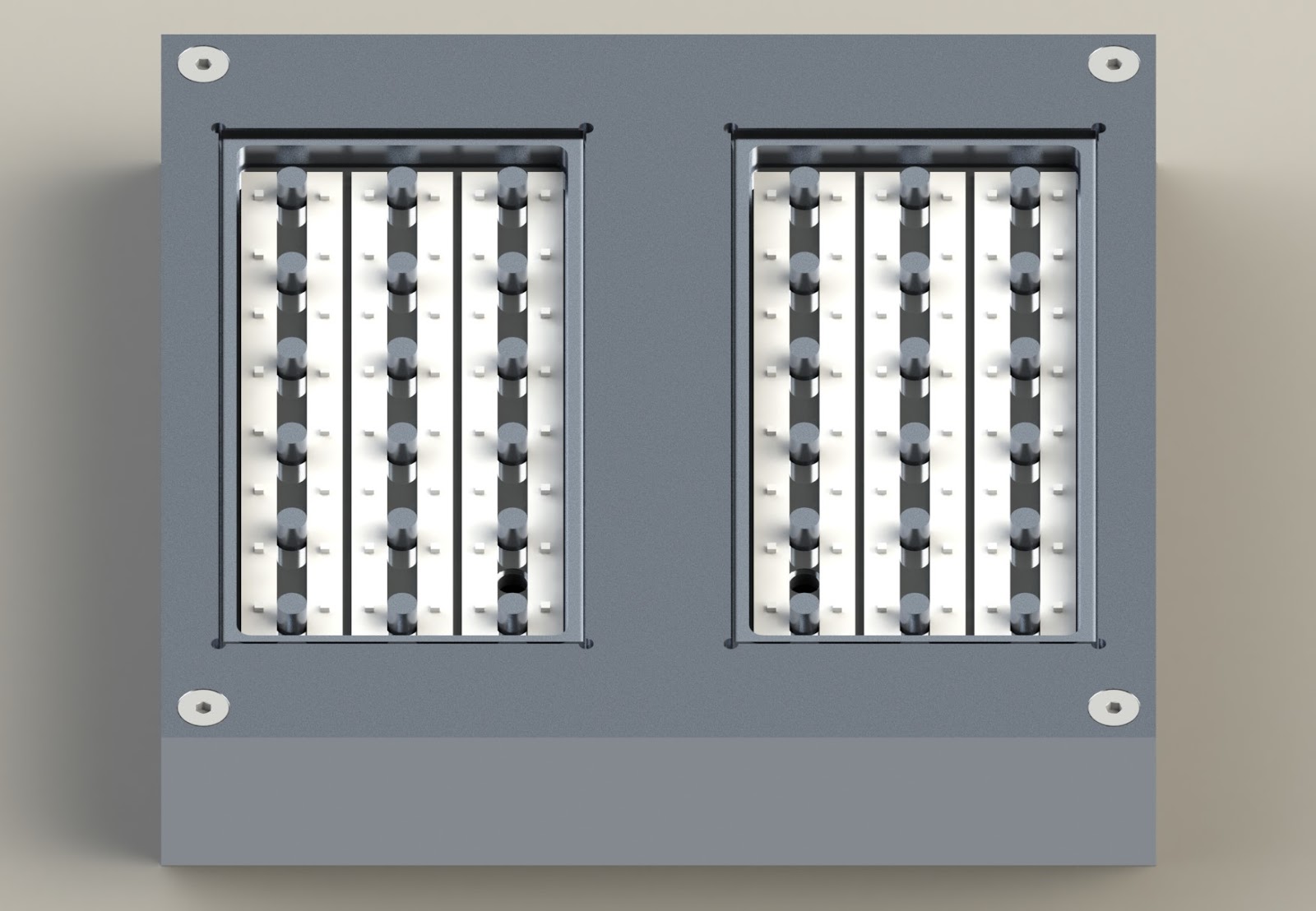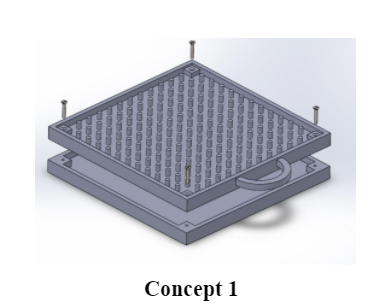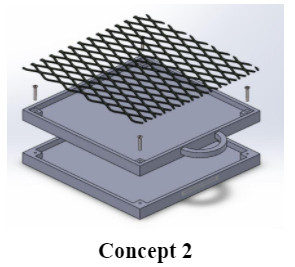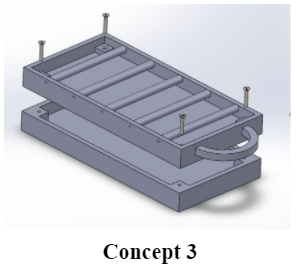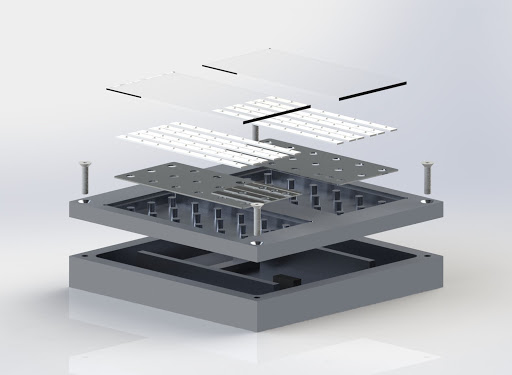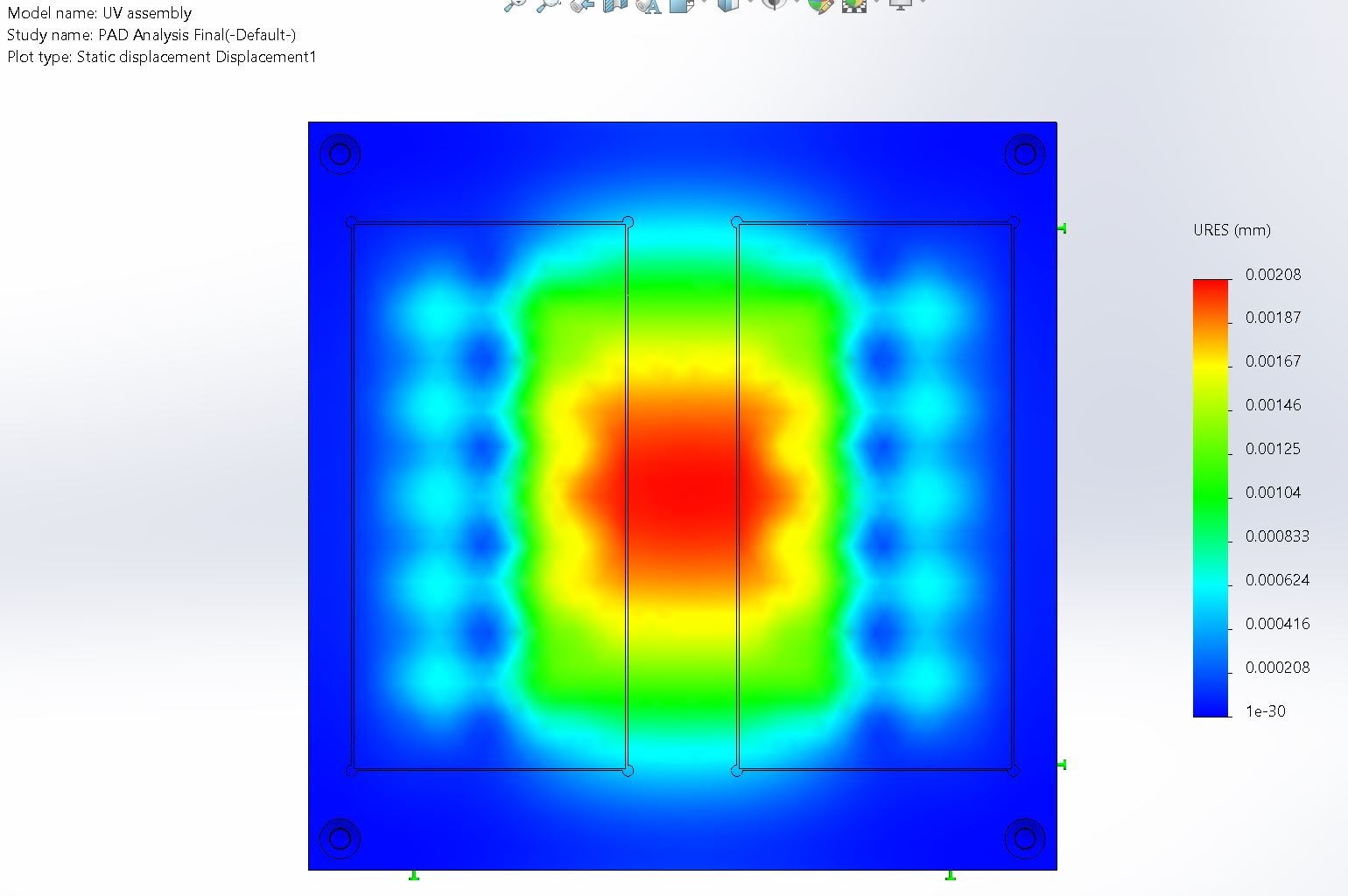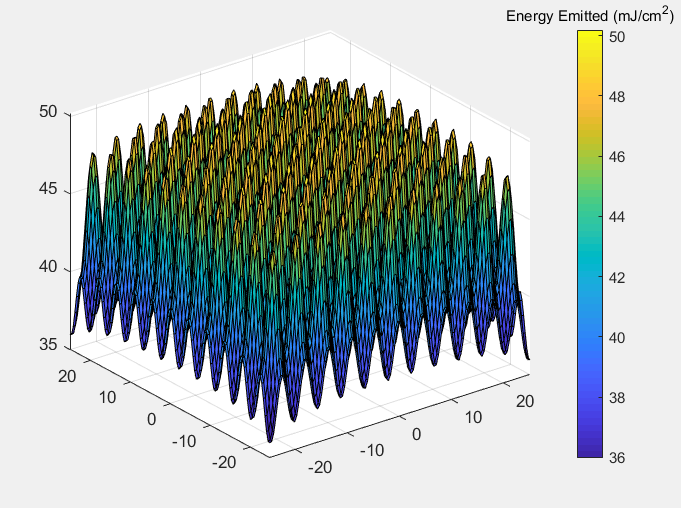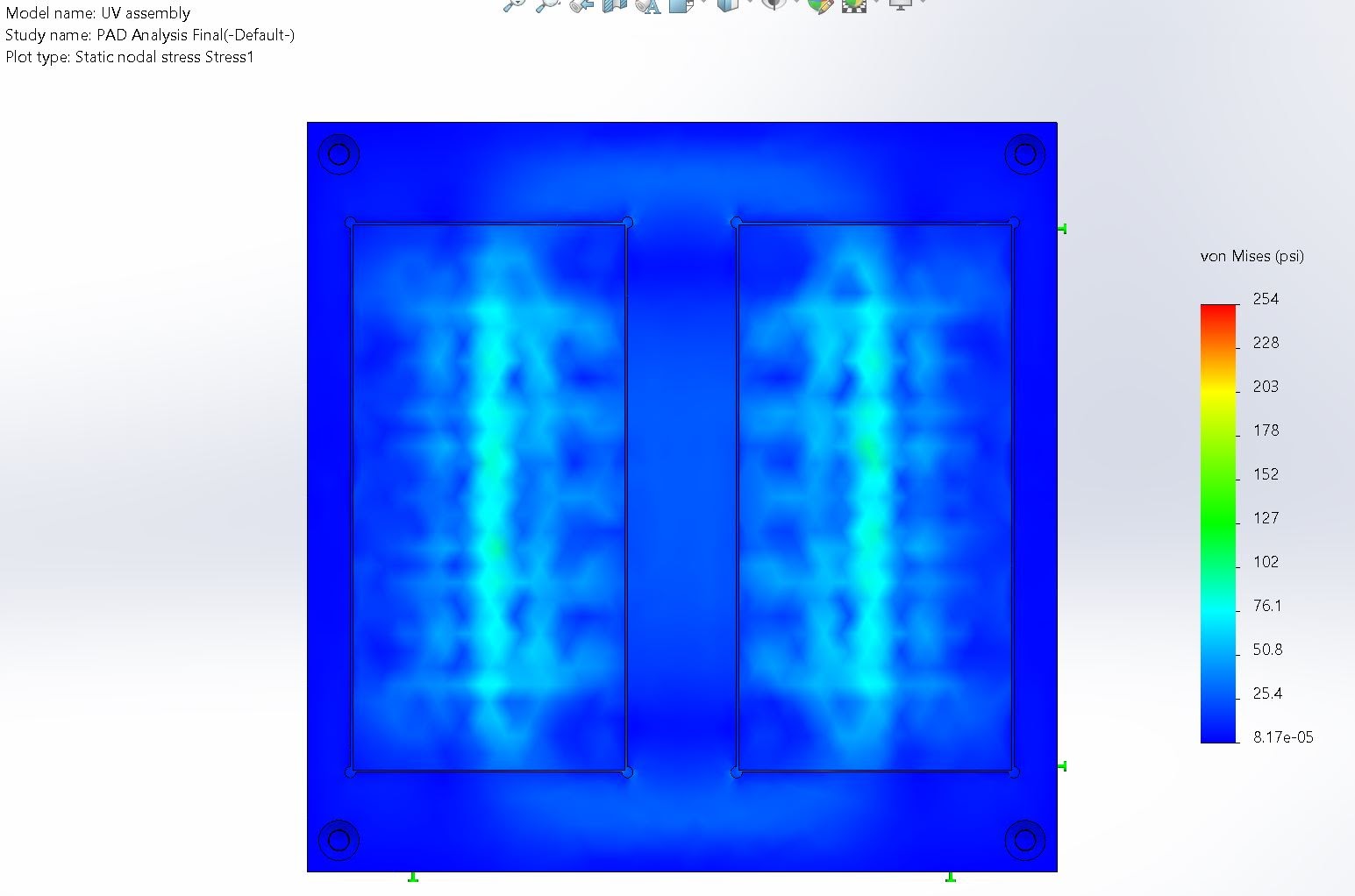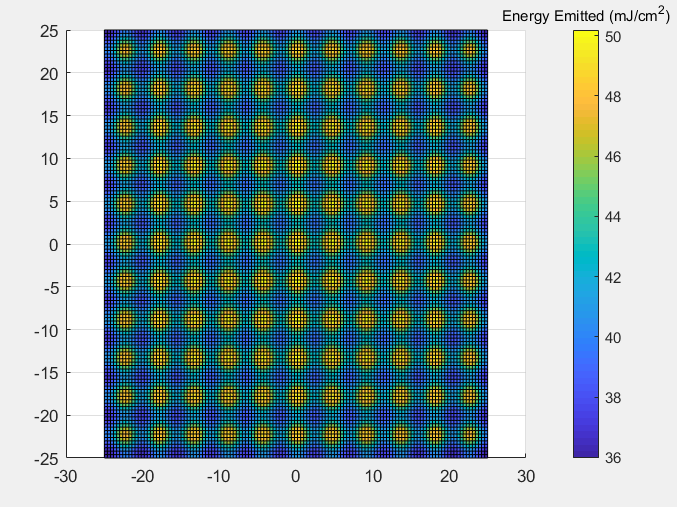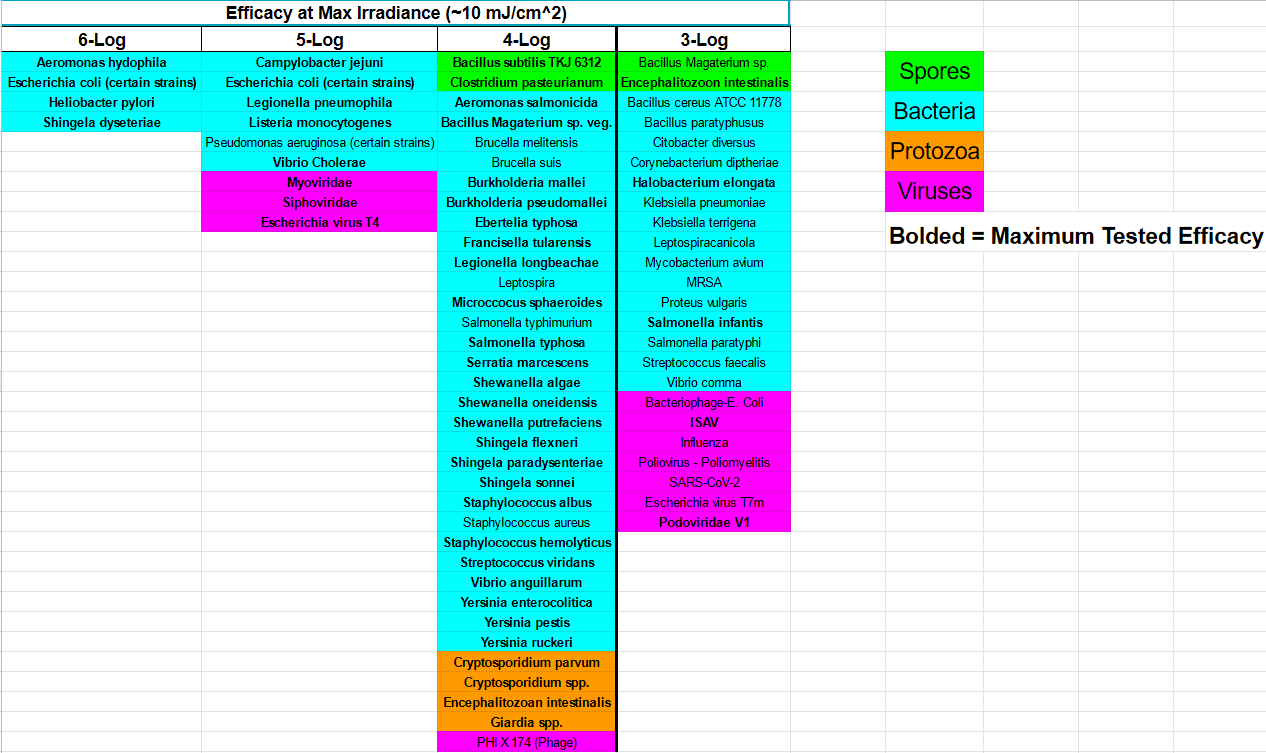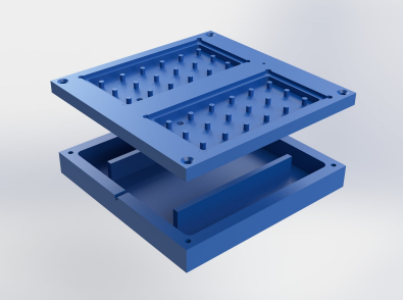UV-C Disinfection Pad
Overview
Harmful microorganisms are an ever-present threat in hospitals and they are notorious for causing health complications in patients. These threats have been further magnified by the COVID-19 pandemic, which has forced hospitals to take extra precautions to protect their patients. Team grUV has developed a product that can assist hospitals and other clean environments, ensuring their spaces have an extra layer of protection against pathogens. Washing hands and wearing masks are often highlighted as being the best ways to help reduce the chance of microbe transmission, however, the bottoms of shoes can also transmit microbes, and keeping them clean is frequently overlooked. As a result, shoes serve as a worryingly effective way to transmit germs from one location to another, putting patients needlessly at risk. Team grUV’s solution to address this issue is a UV-C light pad that sterilizes the bottom of the user’s shoe once they have stepped upon it.
Live Zoom Chat
Use the link below to join us live from 8:00 – 10:30 a.m. on April 29.
Please use passcode: 921460
Or iPhone one-tap: 16699006833,9524948727# or 13462487799,9524948727
Or Telephone:
Dial: +1 669 900 6833 (US Toll) or +1 346 248 7799 (US Toll)
Meeting ID: 952 494 8727
Team Members
- Johnny Boos
- Gregory Meklo
- Ruiqi Sun
- Lauren Nelson
- Jake Pinkston
- Zoe Sano
- Jacob Metzler
The Client
- Tariq Ahmad
Acknowledgements
Project Advisor: Robin Steele
Technical Advisor: Dr. Ata Keyrandish and Dr. Stephen Geer
Donations Made by: Tariq Ahmad and Satview Broadband Ltd
Elevator Pitch
In the US alone, 572,000 lives have been lost due to COVID-19. One valuable lesson learned from this pandemic is the need for reducing bacteria transmission to save lives. Looking at the current situation in hospitals that heavily use masks, disinfection agents, and hand sanitizing stations, it is essential to have effective methods for preventing the spread of germs. However, these practices do not cover the most used and frequently overlooked surface of the hospital, the floors that are walked on. Therefore, Team GrUV came up with a solution that will keep shoes clean as doctors, patients, and visitors use hospital facilities. The introduction of a UV-C disinfection pad serves as a solution that will save lives from healthcare-associated infections.
Video
Gallery
Design Approach
In the early stages of design, the team had to identify the stakeholders that would be most affected by the project. Hospital patients and medical staff would be impacted the greatest from a UV-C disinfection pad since they occupy areas that often contain harmful pathogens, which is further compounded by the fact that hospitals also have a higher concentration of individuals who may have a compromised immune system. In terms of requirements for medical staff, disinfection should happen relatively quickly to accommodate their busy schedules. Additionally, the disinfection must be extremely thorough as medical staff can spend their time seeing several patients, and their shoes act as a vehicle to transport germs from one room to another.
The stakeholder requirements considered ease of use, fast disinfection time, and durability due to high foot traffic. With those needs in mind, three initial designs were sketched out in SolidWorks and presented to the client.
List of client requirements:
- UV Based Disinfection
- Structural Support
- Ease of Sanitation
- Time to Sanitize Under 10 Seconds
- Portability
- Affordable
Concept 1 (top image) would incorporate a panel of fused quartz which would allow UV-C light to pass through while protecting the lights inside from debris and acts as an easy-to-clean surface if necessary. Concept 2 (middle image) would not only be open to debris with the gaps in the grate, but the surface would block light in a lattice pattern because there would be no way for the light to reach those areas underneath someone’s shoe. Concept 3 (bottom image) would require the user to roll their shoes across the LEDs one foot at a time which may take twice as long as the other designs and it faces the same exposure issue as Concept 2 since nothing will be protecting the UV lights. It was decided that Concept 1 would best meet the needs of hospital staff, so the team moved forward with specifying the design so that it could be built.
Once the concept was decided, a simulation needed to be completed to figure out the placement and number of LEDs necessary for sufficient exposure. Members of the team met with one of the technical advisors of the project, Dr. Ata Kheyrandish, to advise the team over how to create a simulation that could be used for determining these design parameters with confidence. By using the data sheets available for the LED lights, the team could simulate any potential arrangement of LEDs and produce a UV-C light distribution graph based on their output. After many iterations of simulations, the team had a model that could be used to more confidently move forward with their light choice as well as implement design changes based on the exact spacing necessary to produce the best distribution of disinfecting light. The revised design of Concept 1 is pictured on the right.
Design Solution
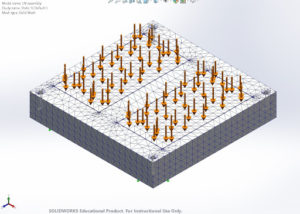
SolidWorks Load Simulation
The design utilizes UV-C light running at 254 nm wavelength for 10 seconds to allow a safe and consistent method to disinfect a person’s shoes without the risk of exposing the user to a dangerous amount of UV radiation. The pad will be able to withstand a structural load of up to 350 lbs which has been analyzed through SolidWorks simulation (figure on the left).
There will be 8 strips of UV-C LEDs with 6 Lights on each strip. Through running simulations on Matlab to find the cone of effectiveness for the lights allowed the team to deem the proper distance between the lights without losing disinfection power. The team went for a 99.99% disinfection goal with a log 4 reduction of microbes which means the number of germs is 10,000 times fewer. Overall, the system was further validated by FMEA testing, computational 3D plots, and technical advisors.
The final design of the pad allows users to step on the glass surface for about 10 seconds, where activation of a push button will activate the UV-C LEDs to disinfect the outsoles of the shoes. This pad is powered through a wall outlet, through an AC/DC converter, and then through a board with the Arduino Nano wired to a relay activated by the pressure button sensor, and then hooked up to the LEDs. The small electrical components will be hidden inside the pad and safely secured from possible electric shock or water damage. The finished pad has an aluminum casing that is strong enough to hold 350 pounds of structural load and endure long usage. Overall, this design has been thoroughly tested, simulated, and constructed safely to be implemented in hospitals. The final design’s total cost was $2,260.25 while the team was given a budget of $5,000.
To test the disinfection product’s efficacy, the team was able to send off the finished prototype to technical advisor Dr. Ata. With his optics lab, he was able to quantify data about the warm-up time, radiation spectrum, and irradiance distribution for the physical UV-C light pad. The radiation spectrum results showed an intensity peak at the proper 254 nm wavelength and an instantaneous warmup time. The irradiance results showed a sufficiently high output for 4-log disinfection of certain spores, bacteria, viruses, and protozoa. For example, the pad can reduce the number of certain strains of Staphylococcus aureus bacteria, which does not have a developed vaccine and is the cause of serious medical issues like meningitis and sepsis, by a factor of 10,000. This provided evidence that the pad reaches the necessary levels of disinfection. The table below shows the log reduction of a certain selection of microbes achieved by the pad.
Efficacy at Max Irradiance
Throughout the design process, the team encountered challenges that they needed to solve for the project to succeed. For example, in the preliminary phases, the team’s initial design was a metal grate that allowed UV light to shine through with minimal obstruction. However, the team realized that the grate could pose an issue for debris falling through and the cleanliness of the top of the surface. The team urgently switched to using a transparent fused quartz surface to ensure the UV-C light cleans the top of the surface each time used. The fused quartz was difficult to obtain, but the client had a supplier who was willing to send us sheets of it.
Another challenge the team faced was the AC/DC converter. The original converter the team ordered allowed voltage from a wall outlet to be converted to 12 V, which was necessary for the converter to power the Arduino and other components. However, when implemented, it was not making the minimum 10% power load that allowed the relay to work properly. The team had to create a circuit with about 10 power resistors to reach at least 48 Ω of resistance. Although this method worked, it was easier to order a new converter to eliminate the load issue.
A constant challenge that the team faced was project management. In the second semester, the team began to fall behind due to supplies not coming in. The team relied more on the Gantt chart to get a broad overview of the project rather than short tasks in Trello. The team designated weeks of time to predict time-consuming tasks. Meanwhile, the team was proactive about other action items that could be completed before the materials arrived.
Then the COVID-19 situation posed an issue when trying to properly design for the needs of a hospital. The team wasn’t able to tour the layout of a local hospital, so they had to switch gears to find user-end feedback. Emails with local hospital workers and management helped the team realize that the pad needed to withstand lots of use and be powered through a nearby power supply. This eliminated concerns about portability, size, and durability. The team was able to work through this challenge by making appropriate design decisions based on stakeholder feedback and research.
Next Steps
The team was able to create a functioning prototype of a UV-C disinfection pad. However, just like any other project, there are a variety of ways to improve, decrease cost and optimize the solution. The main next steps goals involve creating a production plan for the team’s client to minimize cost and make the implementation of this product as effortless as possible. For this to happen our client proposed injection molding of the housing components, as this will be lighter, cheaper, and faster to produce in large quantities.
In the end, the final cost of the aluminum-based UV-C pad was $3,145.67. In order to determine a way that would lower the overall cost of the pad, the team looked into getting quotes for injection molding to determine what the projected cost would be if that was the method of production. After receiving a quote for 1000 pads, it was calculated that one pad would cost approximately $1,626.94. This would decrease the cost of our pad by roughly 50%. One thing to note is that the cost of the pad will continuously decrease if the number of pads that are being built increases with order purchase.
It is important to note that with any design change there comes pros and cons however with enough pads produced there is a significant price reduction, so savings on cost and an overall weight reduction allowing the pad to be moved more easily.
Render of Injection Molding Model
Meet the Team
Johnny Boos
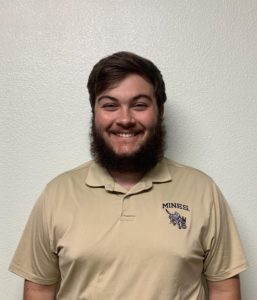 I am a graduating Mechanical Engineer who was born and raised in Denver, Colorado. I have always been interested in cars and mechanical components. With 18 years of racing cars under my belt, I am always open to talk racing. My favorite things to do outside of school are hang out with friends and family and just enjoy a good time.
I am a graduating Mechanical Engineer who was born and raised in Denver, Colorado. I have always been interested in cars and mechanical components. With 18 years of racing cars under my belt, I am always open to talk racing. My favorite things to do outside of school are hang out with friends and family and just enjoy a good time.
Gregory Meklo
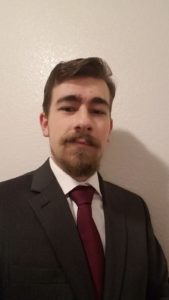 Greg is an Electrical Engineering major with an unbridled passion for working with electronics and computers. Though a native of Minnesota, he’s been living in Parker, Colorado for nearly a decade and a half. Greg has a deep love of learning, and you can frequently catch him working on developing his tinkering skills or tutoring his peers in a variety of subjects. Out of the classroom and lab, Greg enjoys spending time with friends and folding origami creations.
Greg is an Electrical Engineering major with an unbridled passion for working with electronics and computers. Though a native of Minnesota, he’s been living in Parker, Colorado for nearly a decade and a half. Greg has a deep love of learning, and you can frequently catch him working on developing his tinkering skills or tutoring his peers in a variety of subjects. Out of the classroom and lab, Greg enjoys spending time with friends and folding origami creations.
Ruiqi Sun
 Born in Qingdao, China but I have lived in Colorado for almost ten years. I will be graduating with an Electrical Engineering degree in May and start working in the industry. In my free time, I enjoy hanging out with family and friends, playing sports, listening to music, and watching comedy shows or anything funny.
Born in Qingdao, China but I have lived in Colorado for almost ten years. I will be graduating with an Electrical Engineering degree in May and start working in the industry. In my free time, I enjoy hanging out with family and friends, playing sports, listening to music, and watching comedy shows or anything funny.
Lauren Nelson
 I am a graduating senior with a Mechanical Engineering degree. I am originally from Fort Collins, Colorado and my interests include hanging with friends and building LEGOs. Currently, I am a student employee at the Health Center and involved in the Society of Women Engineers and intramural sports. After graduation, I am joining the innovation engineering team at Gates Corporation in Englewood, Colorado.
I am a graduating senior with a Mechanical Engineering degree. I am originally from Fort Collins, Colorado and my interests include hanging with friends and building LEGOs. Currently, I am a student employee at the Health Center and involved in the Society of Women Engineers and intramural sports. After graduation, I am joining the innovation engineering team at Gates Corporation in Englewood, Colorado.
Jake Pinkston
 I’ll be graduating Mechanical Engineer with a minor in computer science this semester with plans on completing a Masters in Data Science next year. I’m a member of the Mines Track and Field team as a pole vaulter, but off the track and out of the classroom I enjoy camping, road trips, and frisbee golf. My life goal is to start a pole vault club for young athletes and provide a positive outlet for youth in track and field.
I’ll be graduating Mechanical Engineer with a minor in computer science this semester with plans on completing a Masters in Data Science next year. I’m a member of the Mines Track and Field team as a pole vaulter, but off the track and out of the classroom I enjoy camping, road trips, and frisbee golf. My life goal is to start a pole vault club for young athletes and provide a positive outlet for youth in track and field.
Zoe Sano
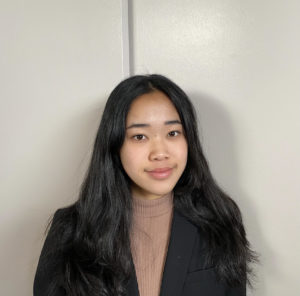 Zoe is an Electrical Engineering major with a specialty in Antennas and Wireless Communications. When she is not studying, she’s likely to be found running on the soccer field as she is a captain for the Mines Varsity Women’s Soccer Team. Born and raised in Oahu, HI, Zoe enjoys hiking, drawing, and playing her ukulele. She plans to graduate from Mines in December and start as a patent engineer intern at Holland & Hart in Boulder, CO.
Zoe is an Electrical Engineering major with a specialty in Antennas and Wireless Communications. When she is not studying, she’s likely to be found running on the soccer field as she is a captain for the Mines Varsity Women’s Soccer Team. Born and raised in Oahu, HI, Zoe enjoys hiking, drawing, and playing her ukulele. She plans to graduate from Mines in December and start as a patent engineer intern at Holland & Hart in Boulder, CO.
Jacob Metzler
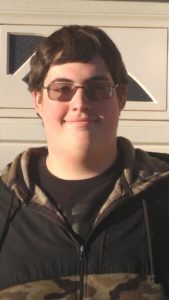 I am a graduating Electrical Engineer from Colorado Springs, Colorado. I am currently employed as an intern at Colorado Springs Utilities and plan to continue my employment with them after graduation until my current project with them is completed. Outside of school and work, I enjoy hanging out with my friends and playing video games.
I am a graduating Electrical Engineer from Colorado Springs, Colorado. I am currently employed as an intern at Colorado Springs Utilities and plan to continue my employment with them after graduation until my current project with them is completed. Outside of school and work, I enjoy hanging out with my friends and playing video games.
